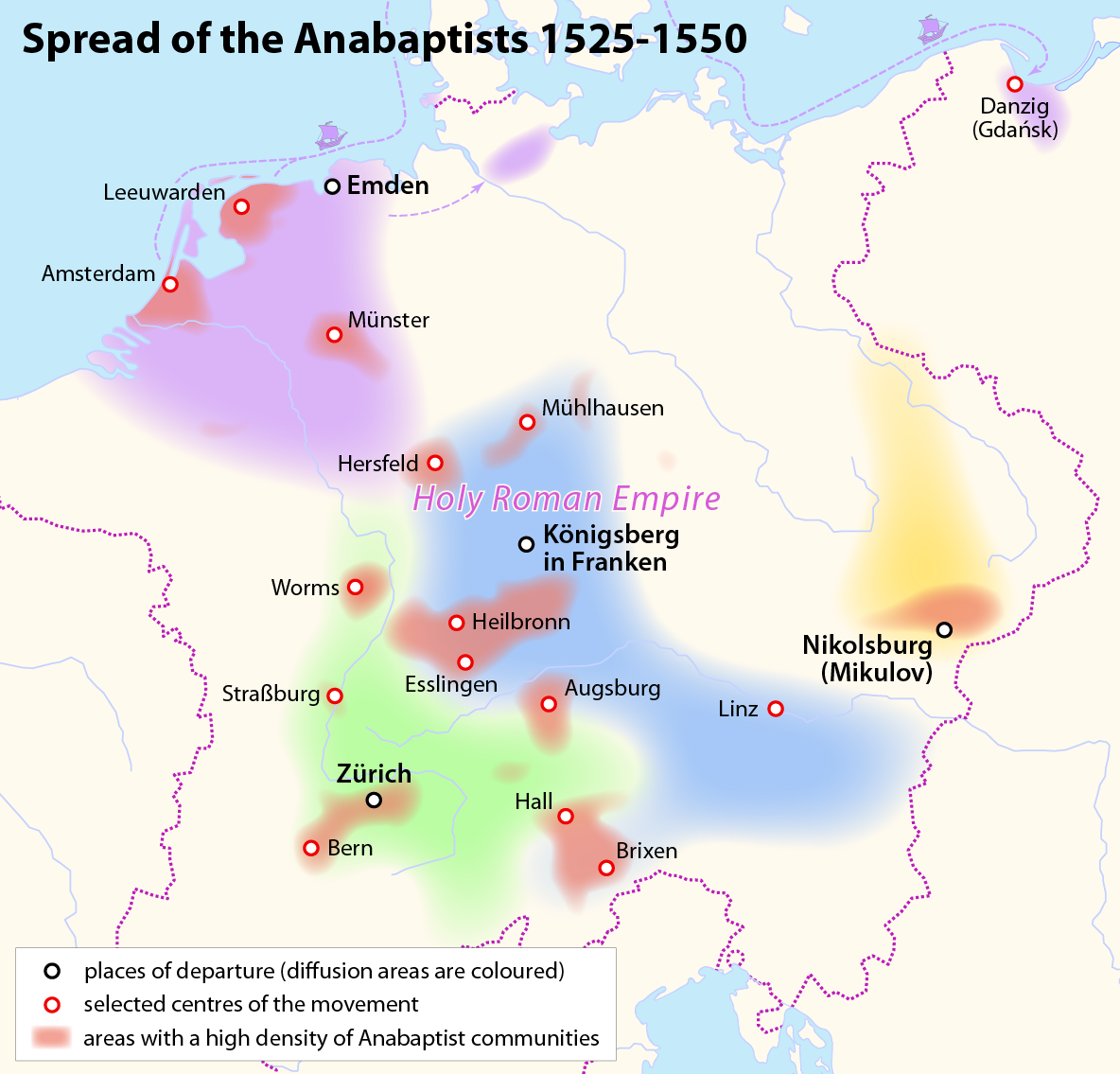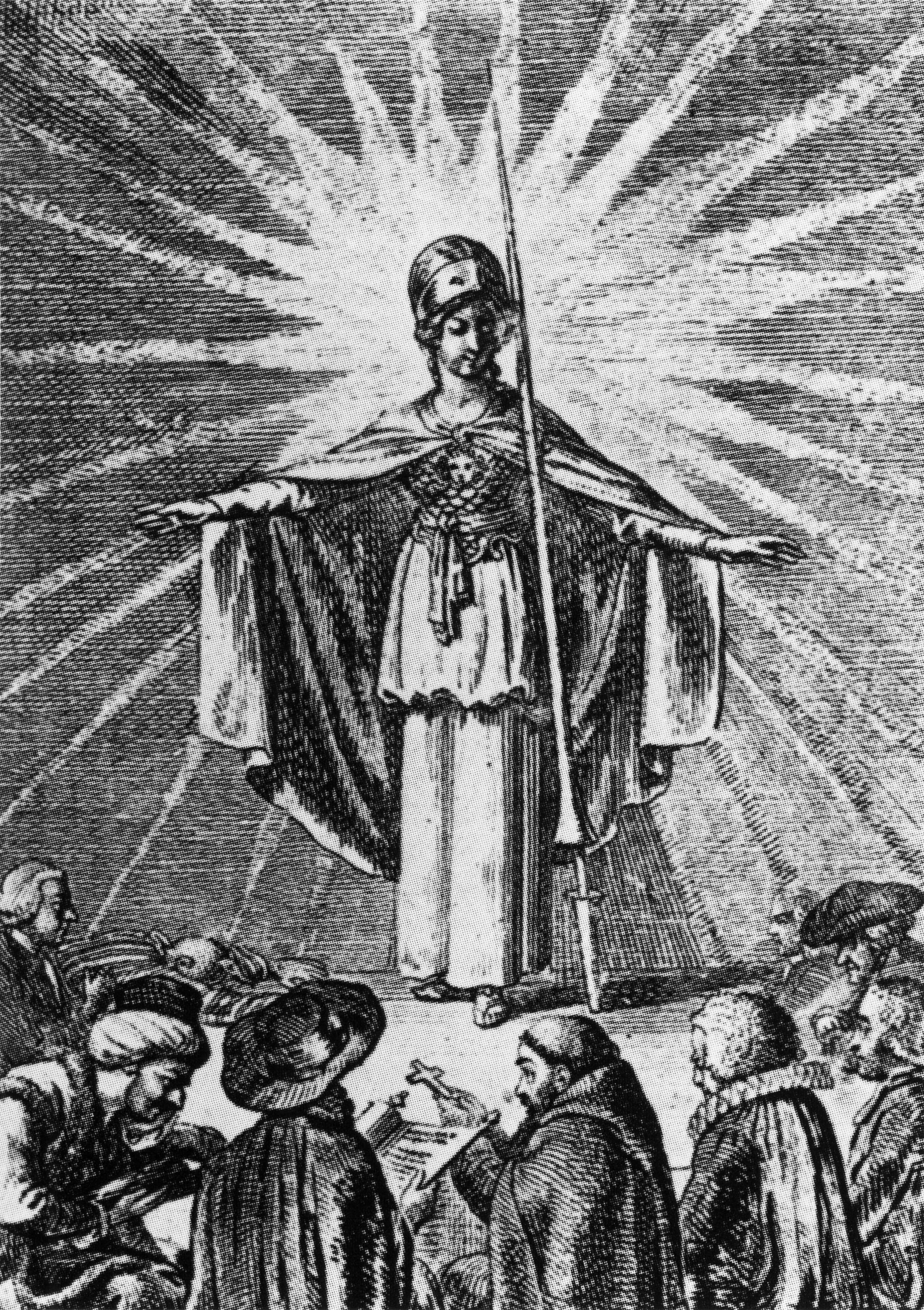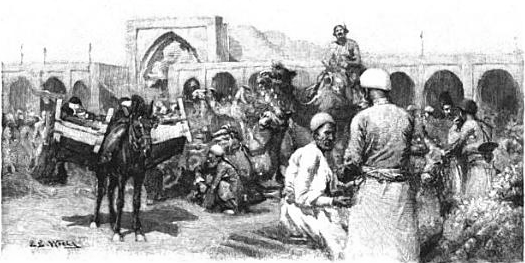|
Vistula Delta Mennonites
Vistula delta Mennonites were a historic Mennonite community established in the mid-16th century in the Vistula river delta in Poland. It originated in the Netherlands and present-day northern Germany. The Mennonite community played an important role in draining and cultivating the Vistula delta and establishing trade relations with the Netherlands. In the late 18th century, a significant number of Mennonites emigrated further and formed the nucleus of the Mennonite settlements in Russia, while many remained in the region after the annexation of the region by Prussia in the Partitions of Poland. With the end of World War II and the flight and expulsion of Germans (including Germanized Dutch settlers), the Mennonite settlements in the Vistula delta ceased to exist. The Plautdietsch language, a mixture of Dutch and the local Low German dialect, originated in the Vistula delta and is still used by Mennonite communities worldwide. Origins The Mennonite movement was founded by Menno ... [...More Info...] [...Related Items...] OR: [Wikipedia] [Google] [Baidu] |
Mennonite
Mennonites are a group of Anabaptism, Anabaptist Christianity, Christian communities tracing their roots to the epoch of the Radical Reformation. The name ''Mennonites'' is derived from the cleric Menno Simons (1496–1561) of Friesland, part of the Habsburg Netherlands within the Holy Roman Empire, present day Netherlands. Menno Simons became a prominent leader within the wider Anabaptist movement and was a contemporary of Martin Luther (1483–1546) and Philip Melanchthon (1497–1560). Through his writings about the Reformation Simons articulated and formalized the teachings of earlier Swiss Anabaptist founders as well as early teachings of the Mennonites founded on the belief in both the mission and ministry of Jesus. Formal Mennonite beliefs were codified in the Dordrecht Confession of Faith (1632), which affirmed "the baptism of believers only, the washing of the feet as a symbol of servanthood, church discipline, the shunning of the excommunicated, the non-swearing of oaths ... [...More Info...] [...Related Items...] OR: [Wikipedia] [Google] [Baidu] |
Fernando Álvarez De Toledo, 3rd Duke Of Alba
Fernando Álvarez de Toledo y Pimentel, 3rd Duke of Alba (29 October 150711 December 1582), known as the Grand Duke of Alba (, ) in Spain and Portugal and as the Iron Duke () or shortly 'Alva' in the Netherlands, was a Spaniards, Spanish nobleman, general and statesman. He has often been considered the most effective general (rank), general of his generation, as well as one of the greatest in history. Historian John Lothrop Motley wrote of him "no man had studied military science more deeply, or practiced it more constantly" at his day. He was a royal promoter of military action against Kingdom of France, France and Protestantism, although he also defended a moral and strategic alliance with Kingdom of England, England that never realized. Alba achieved notoriety for his role during the Eighty Years' War in the Spanish Netherlands, where his prolonged campaigns and repressive political actions caused his figure to be reviled in European history as a symbol of Tyrant, tyranny. Bo ... [...More Info...] [...Related Items...] OR: [Wikipedia] [Google] [Baidu] |
Stalewo
Stalewo is a village in the administrative district of Gmina Markusy, within Elbląg County, Warmian-Masurian Voivodeship, in northern Poland. It lies approximately west of Markusy, south-west of Elbląg, and west of the regional capital Olsztyn. Stalewo was part of Poland, administratively located in the Malbork Voivodeship, before its annexation by Prussia in the First Partition of Poland in 1772. Afterwards from 1871 to 1945, it was also part of Germany. Following Nazi Germany's defeat in World War II World War II or the Second World War (1 September 1939 – 2 September 1945) was a World war, global conflict between two coalitions: the Allies of World War II, Allies and the Axis powers. World War II by country, Nearly all of the wo ..., the village was restored to Poland. References Villages in Elbląg County {{Elbląg-geo-stub ... [...More Info...] [...Related Items...] OR: [Wikipedia] [Google] [Baidu] |
Trutnowy
Trutnowy is a village in the administrative district of Gmina Cedry Wielkie, within Gdańsk County, Pomeranian Voivodeship, in northern Poland. It lies approximately west of Cedry Wielkie, east of Pruszcz Gdański, and south-east of the regional capital Gdańsk. For details of the history of the region, see History of Pomerania The history of Pomerania starts shortly before 1000 AD, with ongoing conquests by newly arrived Polans (western), Polan rulers. Before that, the area was recorded nearly 2000 years ago as Germania, and in modern times Pomerania has been split betw .... References Villages in Gdańsk County {{Gdańsk-geo-stub ... [...More Info...] [...Related Items...] OR: [Wikipedia] [Google] [Baidu] |
Stephen Báthory Of Poland
Stephen or Steven is an English first name. It is particularly significant to Christians, as it belonged to Saint Stephen ( ), an early disciple and deacon who, according to the Book of Acts, was stoned to death; he is widely regarded as the first martyr (or " protomartyr") of the Christian Church. The name, in both the forms Stephen and Steven, is often shortened to Steve or Stevie. In English, the female version of the name is Stephanie. Many surnames are derived from the first name, including Stephens, Stevens, Stephenson, and Stevenson, all of which mean "Stephen's (son)". In modern times the name has sometimes been given with intentionally non-standard spelling, such as Stevan or Stevon. A common variant of the name used in English is Stephan ( ); related names that have found some currency or significance in English include Stefan (pronounced or in English), Esteban (often pronounced ), and the Shakespearean Stephano ( ). Origins The name "Stephen" (and its ... [...More Info...] [...Related Items...] OR: [Wikipedia] [Google] [Baidu] |
Siedlce, Gdańsk
Siedlce is a district of the city of Gdańsk, Poland, located to the west of the city centre. Location Siedlce borders Piecki-Migowo, Suchanino, and Aniołki to the north, Śródmieście to the west, Chełm and Wzgórze Mickiewicza to the south, and Ujeścisko-Łostowice to the east. The quarters ('' osiedla'') of the district are Dolina, Emaus, Krzyżowniki, Szkódka, Winniki, and Ziemica. History Siedlce was first mentioned in 1280, in the context of the Siedlce Stream (''fluvium Schedelicz''). The first mention of the town itself occurs in 1379. The town's population was mostly concentrated in the valley, owned up until 1396 by Saint Catherine's Church, and then Saint Bridget's. In 1454, the Polish king Kazimierz Jagiellończyk gave the village to the city of Gdańsk. Siedlce was burnt down in 1433 by the besieging Hussites, and then again in 1462 by the Teutonic Knights. In 1472, after a dispute over control of the local government, the Bridgettines prevailed. In the ... [...More Info...] [...Related Items...] OR: [Wikipedia] [Google] [Baidu] |
Second Partition Of Poland
The 1793 Second Partition of Poland was the second of partitions of Poland, three partitions (or partial annexations) that ended the existence of the Polish–Lithuanian Commonwealth by 1795. The second partition (politics), partition occurred in the aftermath of the Polish–Russian War of 1792 and the Targowica Confederation of 1792, and was approved by its territorial beneficiaries, the Russian Empire and the Kingdom of Prussia. The division was ratified by the coerced Polish parliament (Sejm of the Polish–Lithuanian Commonwealth, Sejm) in 1793 (see the Grodno Sejm) in a short-lived attempt to prevent the inevitable complete annexation of Poland, the Third Partition of Poland, Third Partition. Background By 1790, on the political front, the Commonwealth had deteriorated into such a helpless condition that it was forced into an alliance with its enemy, Prussia. The Polish–Prussian alliance, Polish-Prussian Pact of 1790 was signed, giving false hope that the Commonwealth mig ... [...More Info...] [...Related Items...] OR: [Wikipedia] [Google] [Baidu] |
Gdańsk
Gdańsk is a city on the Baltic Sea, Baltic coast of northern Poland, and the capital of the Pomeranian Voivodeship. With a population of 486,492, Data for territorial unit 2261000. it is Poland's sixth-largest city and principal seaport. Gdańsk lies at the mouth of the Motława River and is situated at the southern edge of Gdańsk Bay, close to the city of Gdynia and the resort town of Sopot; these form a metropolitan area called the Tricity, Poland, Tricity (''Trójmiasto''), with a population of approximately 1.5 million. The city has a complex history, having had periods of Polish, German and self rule. An important shipbuilding and trade port since the Middle Ages, between 1361 and 1500 it was a member of the Hanseatic League, which influenced its economic, demographic and #Architecture, urban landscape. It also served as Poland's principal seaport and was its largest city since the 15th century until the early 18th century when Warsaw surpassed it. With the Partition ... [...More Info...] [...Related Items...] OR: [Wikipedia] [Google] [Baidu] |
Warsaw Confederation
The Warsaw Confederation, also called the Compact of Warsaw, was a political-legal act signed in Warsaw on 28 January 1573 by the first Convocation Sejm (''Sejm konwokacyjny'') held in the Polish Commonwealth. Convened and deliberating as a confederation between 6 and 29 January 1573, during the Commonwealth's first interregnum period (1572–1574), it aimed to form a general confederation to prepare the election of a new king of Poland and ensure continuity during the interregnum. The confederation also pursued the goal of a religious tolerance edict, while ensuring the political equality of dissenters with Catholics. It was one of the first European acts to grant freedom of religion. It was an important development in the history of Poland and Lithuania, extending religious tolerance to the nobility and free persons ( burghers, the townspeople of royal cities) within the Polish–Lithuanian Commonwealth. This event is considered the formal beginning of religious freedom in ... [...More Info...] [...Related Items...] OR: [Wikipedia] [Google] [Baidu] |
Religious Freedom
Freedom of religion or religious liberty, also known as freedom of religion or belief (FoRB), is a principle that supports the freedom of an individual or community, in public or private, to manifest religion or belief in teaching, practice, worship, and observance. It also includes the right not to profess any religion or belief or "not to practice a religion" (often called freedom ''from'' religion). The concept of religious liberty includes, and some say requires, secular liberalism, and excludes authoritarian versions of secularism. Freedom of religion is considered by many people and most nations to be a fundamental human right. Freedom of religion is protected in all the most important international human rights conventions, such as the United Nations International Covenant on Civil and Political Rights, the American Convention on Human Rights, the European Convention on Human Rights, and the United Nations Convention on the Rights of the Child. In a country wit ... [...More Info...] [...Related Items...] OR: [Wikipedia] [Google] [Baidu] |
Dirk Philips
Dirk Philips (1504–1568) was an early Anabaptist writer and theologian. He was one of the peaceful disciples of Melchior Hoffman and later joined Menno SimonsGunnar Westin, ''Vapaan kristillisyyden historia'', s. 203. in laying out practical doctrines for what would become the Mennonite church. Biography Dirk Philips was born in Leeuwarden in 1504, the son of a priest (it was not uncommon at the time for a priest to have unofficial wives and families). He was a Franciscan friar. He joined the Anabaptist Brotherhood in 1533 and became an elder in 1534. In 1537, he was named one of the outstanding Anabaptist leaders. In 1561, he was described as an old man, not very tall, with a grey beard and white hair. He died in Het Falder in 1568. Beliefs He was the leading theologian of his time among Dutch Mennonites. He was known to be very systematic in his thinking, and very strict and unwavering in his beliefs. There were two key themes to his theology: the word of scri ... [...More Info...] [...Related Items...] OR: [Wikipedia] [Google] [Baidu] |
Grain Trade
The grain trade refers to the local and international trade in cereals such as wheat, barley, maize, rice, and other food grains. Grain is an important trade item because it is easily stored and transported with limited spoilage, unlike other agricultural products. Healthy grain supply and trade is important to many societies, providing a caloric base for most food systems as well as important role in animal feed for animal agriculture. The grain trade began as early as agricultural settlement, identified in many of the early cultures that adopted sedentary farming. Major societal changes have been directly connected to the grain trade, such as the Fall of the Western Roman Empire, fall of the Roman Empire. From the early modern period onward, grain trade has been an important part of Colonialism, colonial expansion and foreign policy. The geopolitical dominance of countries like Australia, the United States, Canada, and the Soviet Union during the 20th century was connected with t ... [...More Info...] [...Related Items...] OR: [Wikipedia] [Google] [Baidu] |




